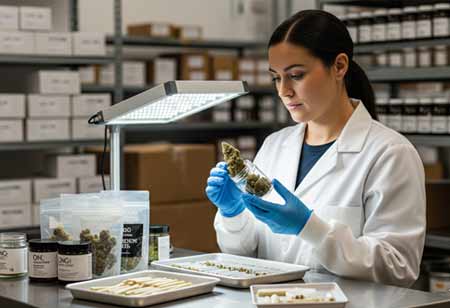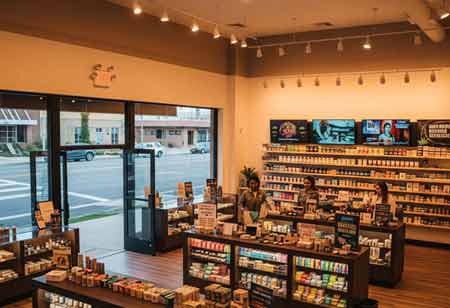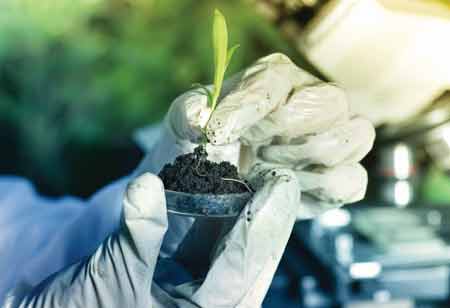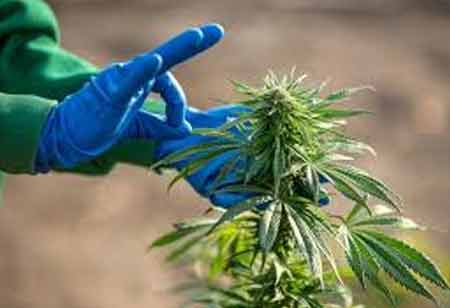Thank you for Subscribing to Cannabis Business Insights Weekly Brief
The Commercial Ascent of Under Canopy Lighting in Cannabis
The cannabis industry is shifting toward under-canopy lighting, which enhances yields and quality by delivering light to lower plant layers, thereby fostering optimal growth and uniformity.
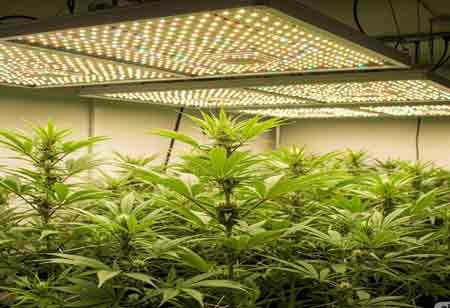
By
Cannabis Business Insights | Tuesday, November 25, 2025
Stay ahead of the industry with exclusive feature stories on the top companies, expert insights and the latest news delivered straight to your inbox. Subscribe today.
The cannabis industry is undergoing a transformative shift in cultivation practices, driven by the pursuit of efficiency and quality, with under-canopy lighting emerging as a key innovation over traditional overhead systems. This innovative approach involves delivering supplemental light directly to the lower and inner regions of the cannabis plant, areas that conventional lighting setups have been underserving. The widespread integration of this technology is fundamentally reshaping the landscape of indoor and greenhouse cultivation, paving the way for superior yields, elevated cannabinoid and terpene profiles, and a more uniform, high-value end product.
The core principle behind under-canopy lighting addresses a fundamental challenge inherent in dense plant canopies: the uneven penetration of photosynthetically active radiation (PAR). In a typical top-lit environment, the uppermost leaves and branches act as a natural barrier, intercepting a significant proportion of the available light. This phenomenon leaves the lower portions of the plant in a state of perpetual shadow, resulting in underdeveloped bud sites, reduced photosynthetic activity in lower leaves, and a noticeable disparity in the quality and size of harvested flowers. Under canopy lighting directly counteracts this by positioning light sources strategically within or beneath the plant structure, ensuring that these previously light-deprived areas receive the essential photons required for vigorous growth and optimal development.
Technological Foundations and Advantages
The technological advancements that have propelled under canopy lighting into the mainstream are primarily due to the rapid evolution and widespread availability of LED (Light-Emitting Diode) technology. LEDs possess several inherent advantages that make them uniquely suited for this application. Their remarkably low heat emission is paramount, as it allows for their placement close to plant tissue without the risk of thermal damage or excessive heat buildup within the dense canopy. This is a critical factor, as excessive heat can lead to nutrient lockout, leaf burn, and increased susceptibility to pathogens. Furthermore, LEDs are highly energy-efficient, translating to lower operational costs for cultivators, a significant consideration in a highly competitive market. Their compact and often modular form factors also facilitate seamless integration into diverse cultivation environments, from multi-tier vertical farming racks to expansive greenhouse setups.
One of the most compelling attributes of modern LED technology in this context is its ability to offer precise spectral control. Cultivators can now select or tune LED fixtures to emit specific wavelengths of light that are most beneficial for various stages of cannabis growth and the biosynthesis of desirable compounds. Red and far-red wavelengths, for instance, have been extensively researched and proven effective in stimulating robust stem elongation, promoting flowering, and enhancing overall biomass accumulation in the lower canopy. By delivering these targeted spectra directly to shaded areas, under canopy lights optimize the plant's natural responses to light, leading to more complete and vigorous development throughout its entire structure.
Impact on Yield and Quality
The impact of integrating under-canopy light solutions on cannabis cultivation is profound and multifaceted. A primary and immediately evident benefit is a substantial increase in overall yield. By providing adequate light to dormant or underdeveloped bud sites in the lower canopy, these solutions stimulate the full maturation of these sites into dense, high-quality flowers. This not only augments the total biomass per plant but also dramatically increases the proportion of marketable, premium-grade product, effectively transforming what might otherwise be considered "larf" or low-value material into a valuable harvest. This leads to a more efficient utilization of grow space and a significant boost in overall productivity.
Beyond mere quantity, under canopy lighting significantly enhances the quality and uniformity of the harvested material. Consistent light exposure across the entire vertical profile of the plant fosters more homogenous bud development. This reduces the variations in size, density, and chemical composition between the upper colas and the lower flowers, a characteristic highly sought after by commercial operations. Such uniformity streamlines post-harvest processing, ensures greater product consistency, and ultimately elevates the perceived value of the entire crop. Improved light access to lower leaves enhances their photosynthetic efficiency, contributing to the plant's overall metabolic vigor and nutrient uptake, ultimately resulting in healthier, more resilient plants.
Integration and Future Outlook
The versatility of under-canopy lighting solutions allows for their adaptable deployment across various cultivation methods. Whether integrated horizontally beneath the main canopy or even as inter-canopy lights positioned between individual branches, their precise placement is crucial. Growers often angle these supplemental lights slightly upwards or outwards to maximize light spread and penetration. The intensity and duration of under-canopy illumination are typically fine-tuned throughout the plant's growth cycle, with careful consideration given to the specific light requirements of the cultivated strain and the ambient environmental conditions. This approach ensures that plants receive optimal light doses tailored to their physiological needs at every stage of development.
The ongoing refinement of under-canopy lighting technology is continuously pushing the boundaries of cannabis cultivation. Manufacturers are developing increasingly sophisticated fixtures that are more durable, easier to install, and offer greater control over light output and spectrum. The integration of advanced control systems, including dimming capabilities and programmable light schedules, empowers cultivators with unprecedented precision in managing their lighting environments. This granular control allows for the creation of customized "light recipes" that can be optimized for specific cannabis cultivars, further enhancing their genetic potential.
As the cannabis industry continues its trajectory of rapid innovation and professionalization, the role of under-canopy light solutions is poised for even greater prominence. The drive for increased operational efficiency, coupled with the continuous advancements in LED technology and photobiology, solidifies under canopy lighting as an indispensable tool for maximizing the potential of every cannabis plant. This targeted illumination strategy is no longer a niche technique, but a fundamental component of modern, high-performance cultivation. It ensures that every leaf and every bud receives its optimal share of light, leading to more productive, consistent, and ultimately more profitable harvests.


